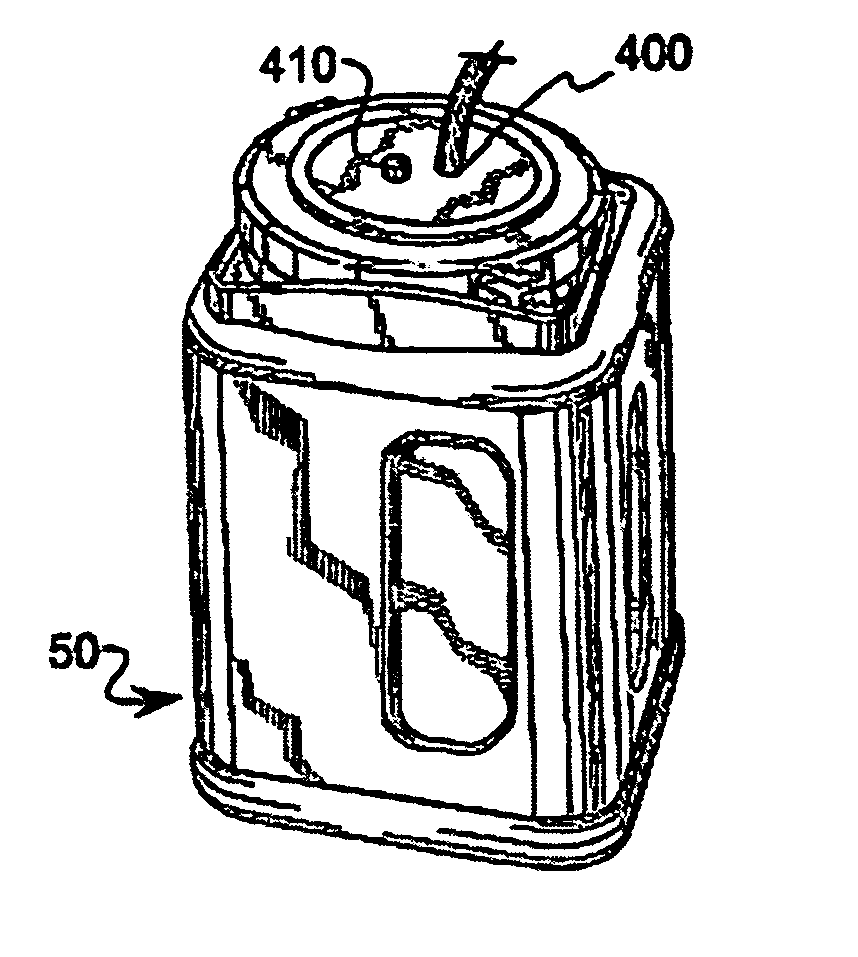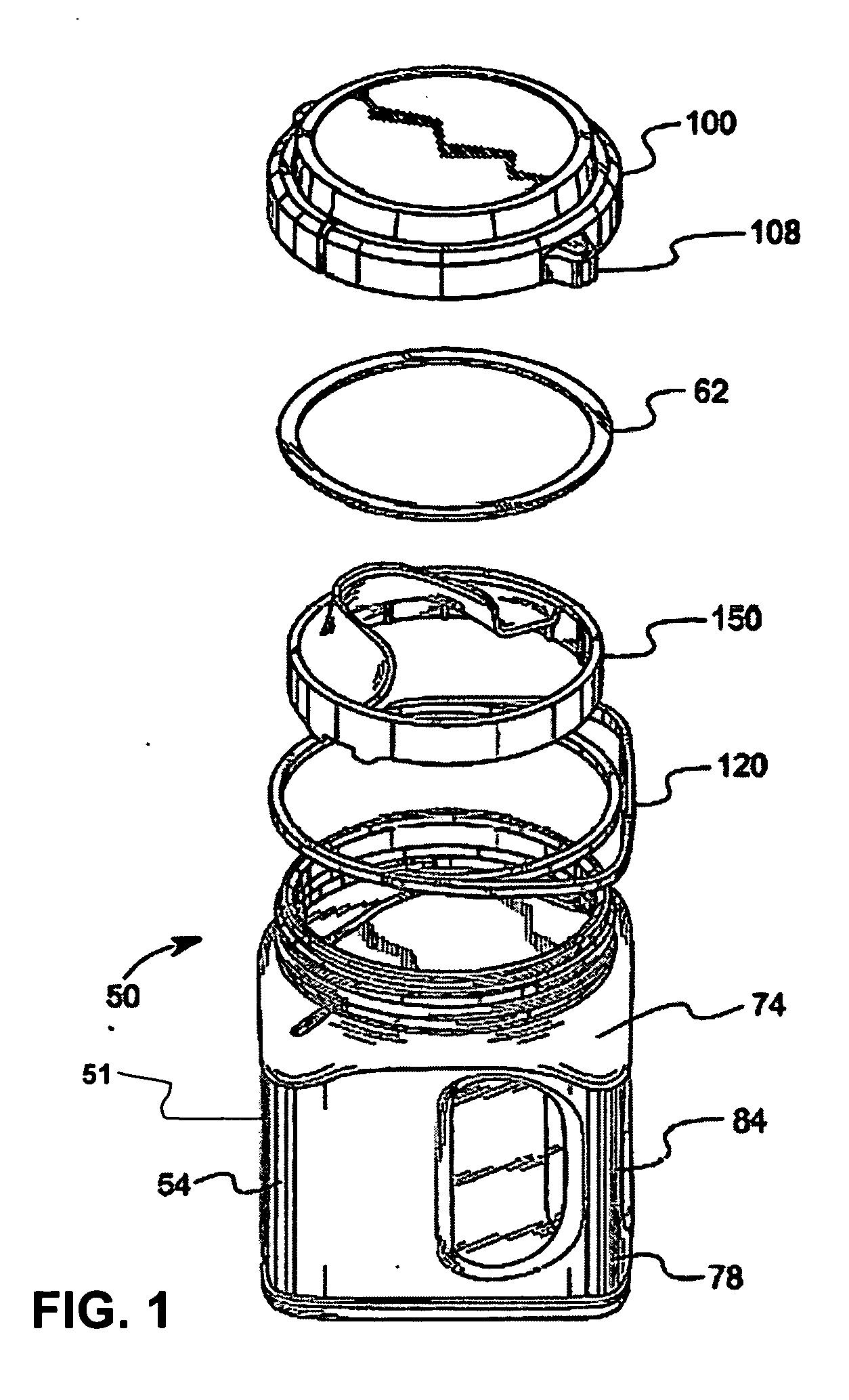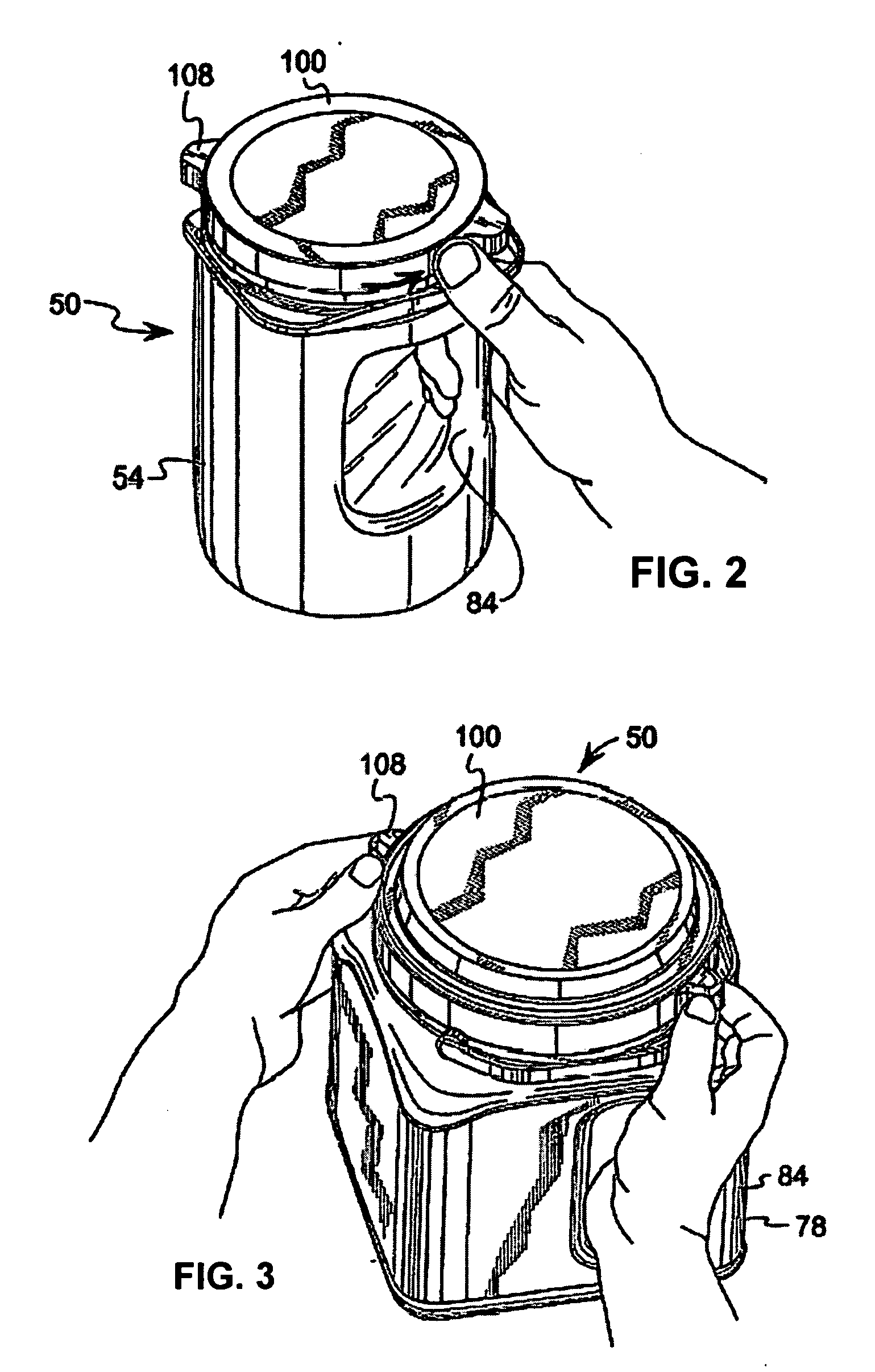Container and lid assembly
a paint container and lid technology, applied in the field of paint containers and accessories, can solve the problems of difficult lid replacement, difficult removal of lids, hazardous practice, etc., and achieve the effect of convenient replacement of conventional paint cans
- Summary
- Abstract
- Description
- Claims
- Application Information
AI Technical Summary
Benefits of technology
Problems solved by technology
Method used
Image
Examples
Embodiment Construction
[0064] It will be appreciated that the illustrated boundaries of elements (e.g., boxes or groups of boxes) in the figures represent one example of the boundaries. One of ordinary skill in the art will appreciate that one element may be designed as multiple elements or that multiple elements may be designed as one element. An element shown as an internal component of another element may be implemented as an external component and vice versa.
[0065] Further, in the accompanying drawings and description that follow, like parts are indicated throughout the drawings and description with the same reference numerals, respectively. The figures are not drawn to scale and the proportions of certain parts have been exaggerated for convenience of illustration.
[0066] Referring to FIG. 1, a schematic view of the components of the container 50 and lid 100 assembly is shown. The assembly comprises a container 50 having an integral handle 84, a bail handle 120, a pouring insert 150, and a lid 100 h...
PUM
 Login to View More
Login to View More Abstract
Description
Claims
Application Information
 Login to View More
Login to View More - R&D
- Intellectual Property
- Life Sciences
- Materials
- Tech Scout
- Unparalleled Data Quality
- Higher Quality Content
- 60% Fewer Hallucinations
Browse by: Latest US Patents, China's latest patents, Technical Efficacy Thesaurus, Application Domain, Technology Topic, Popular Technical Reports.
© 2025 PatSnap. All rights reserved.Legal|Privacy policy|Modern Slavery Act Transparency Statement|Sitemap|About US| Contact US: help@patsnap.com



